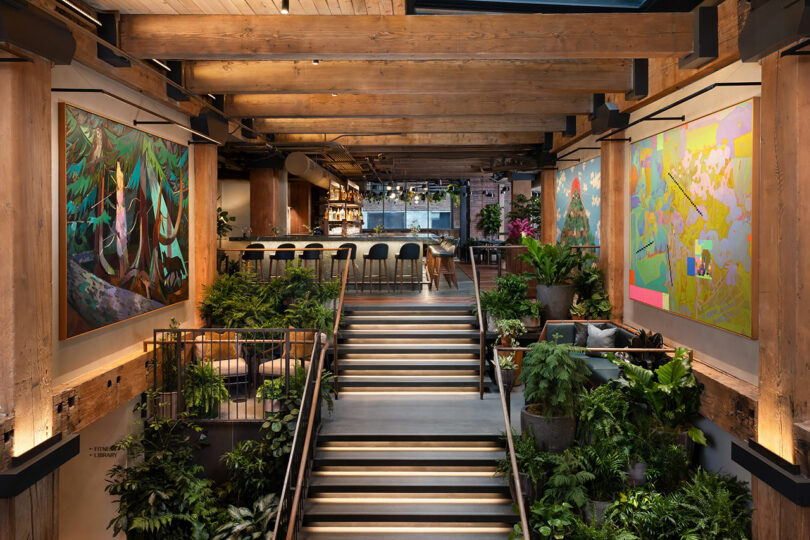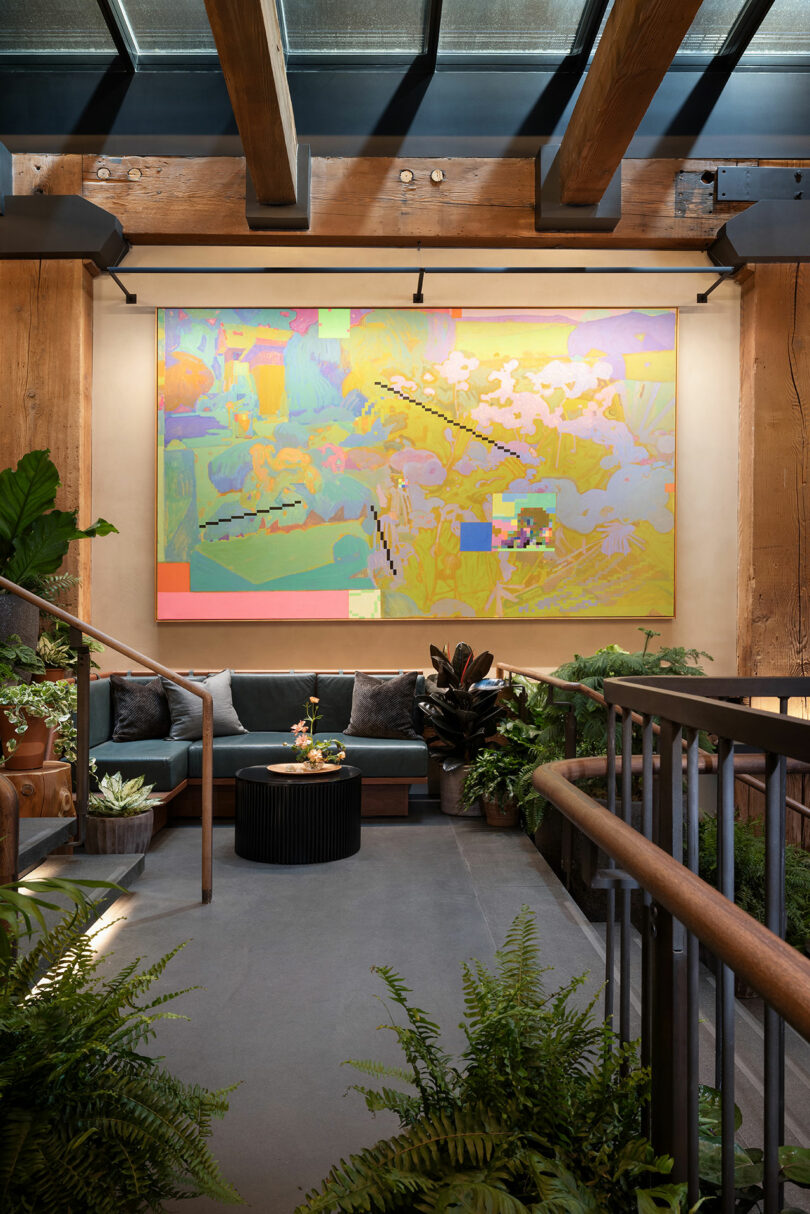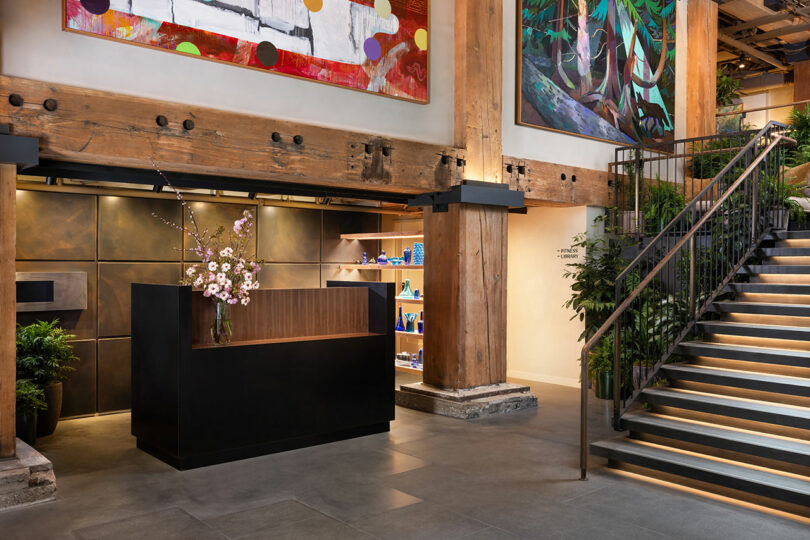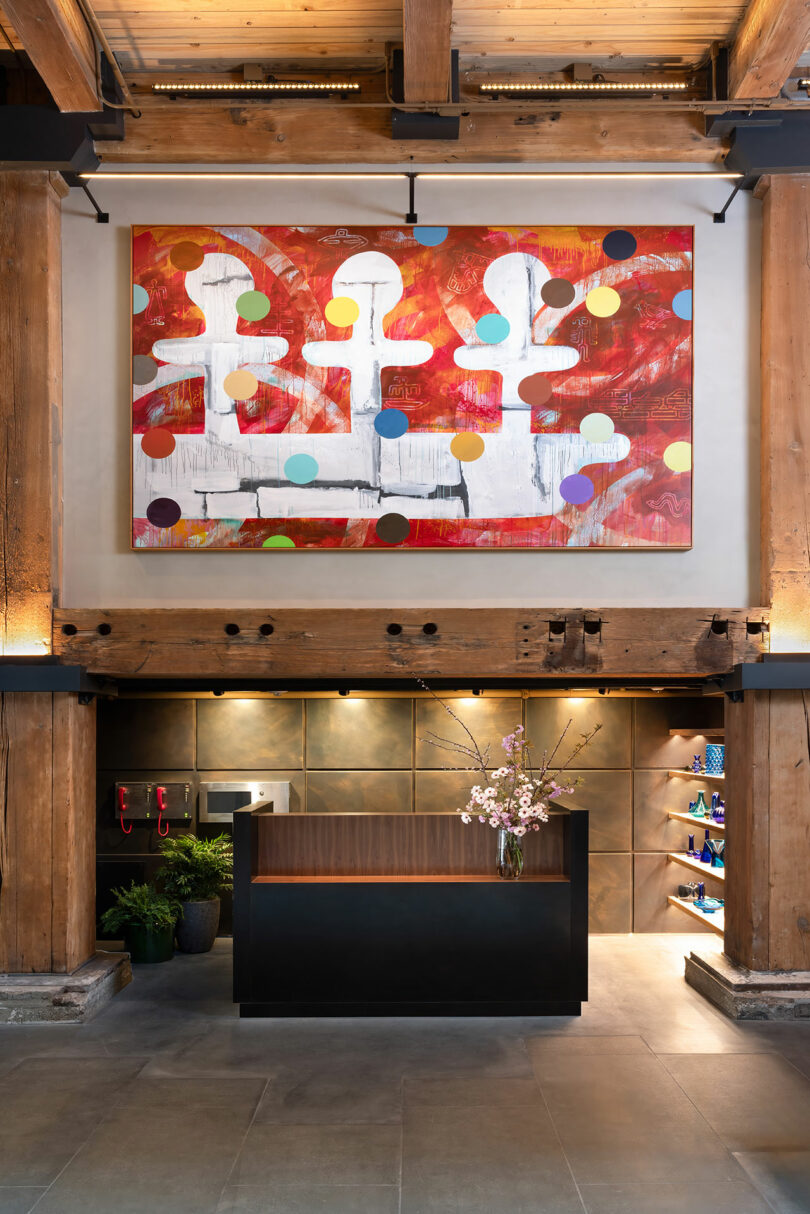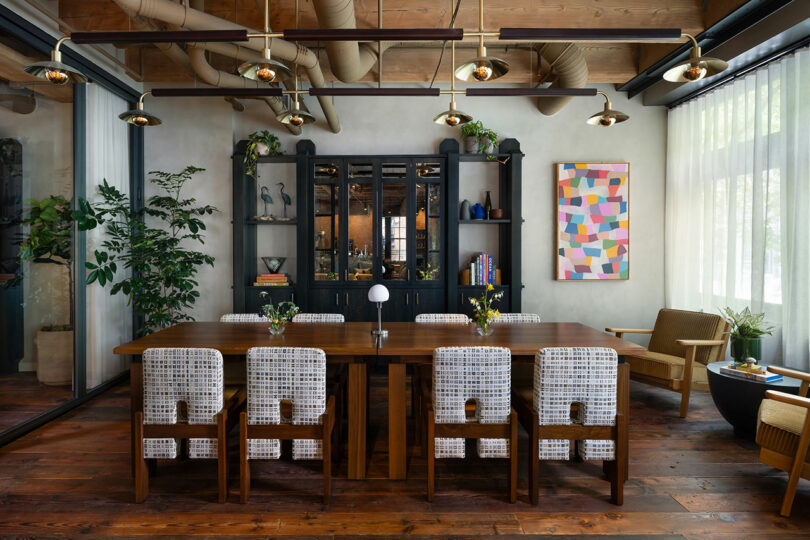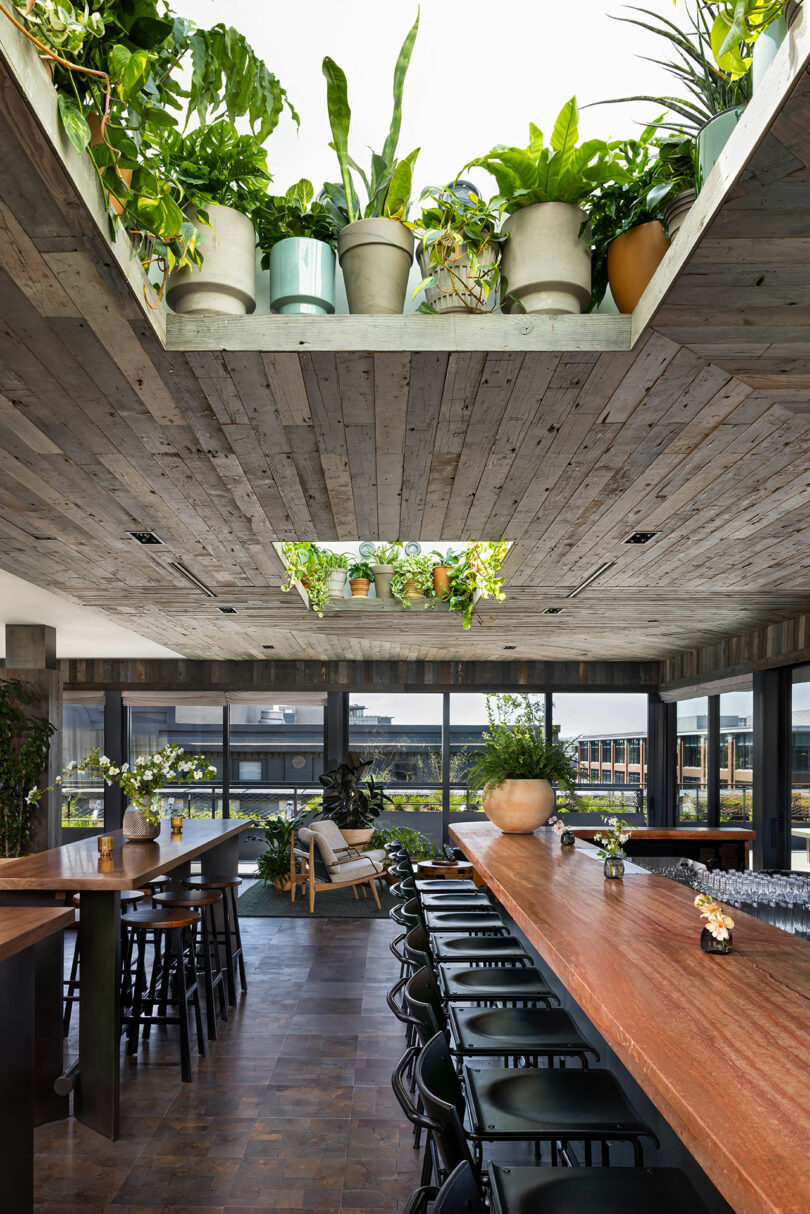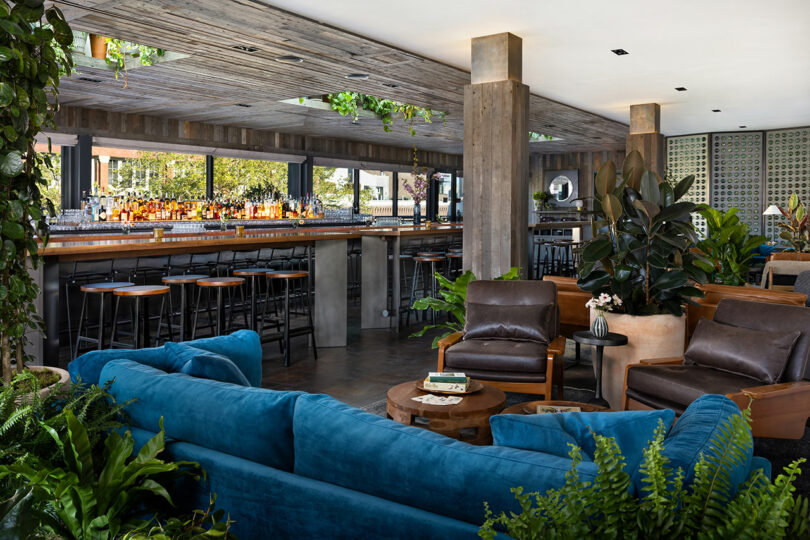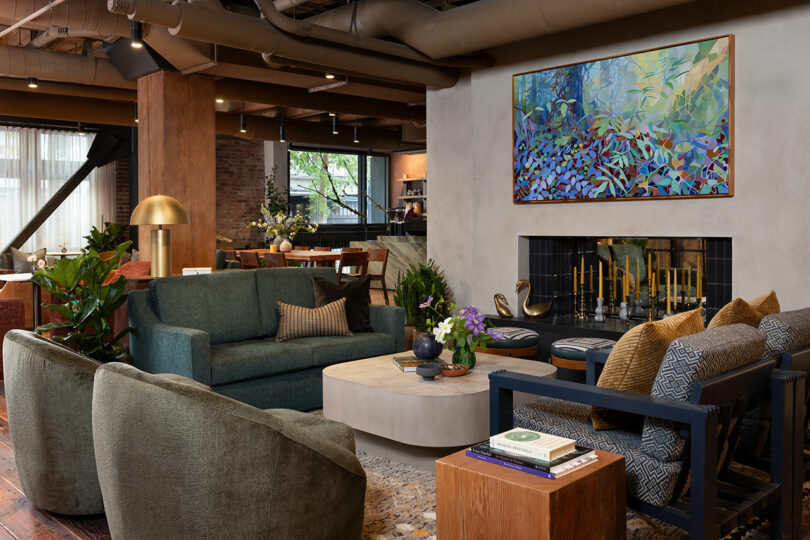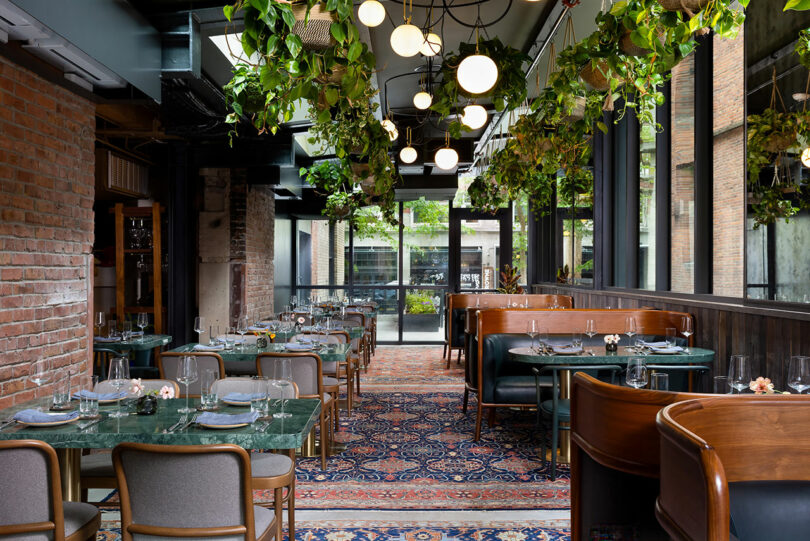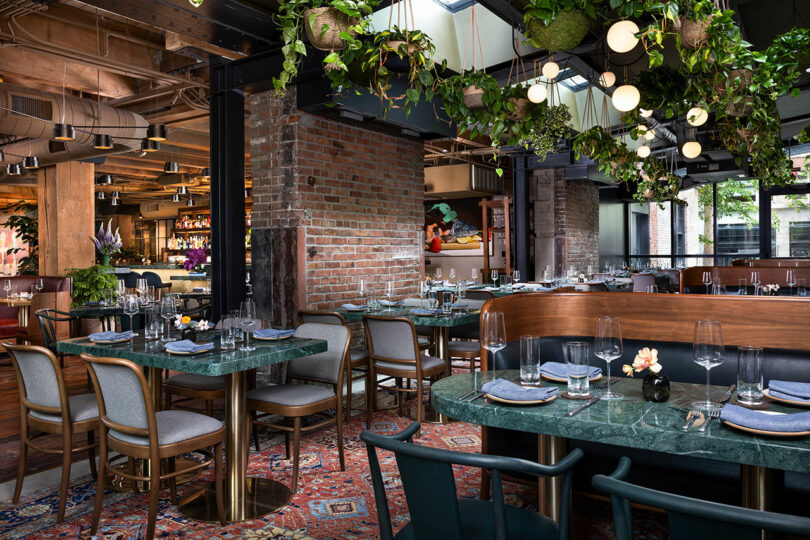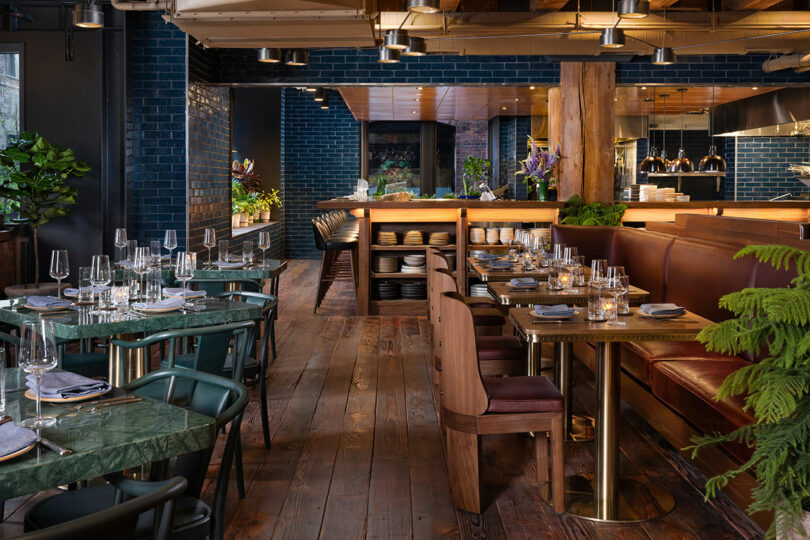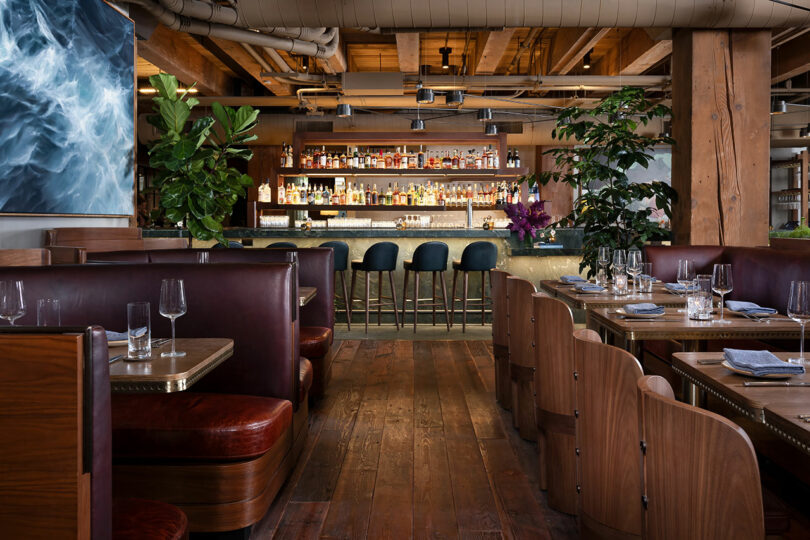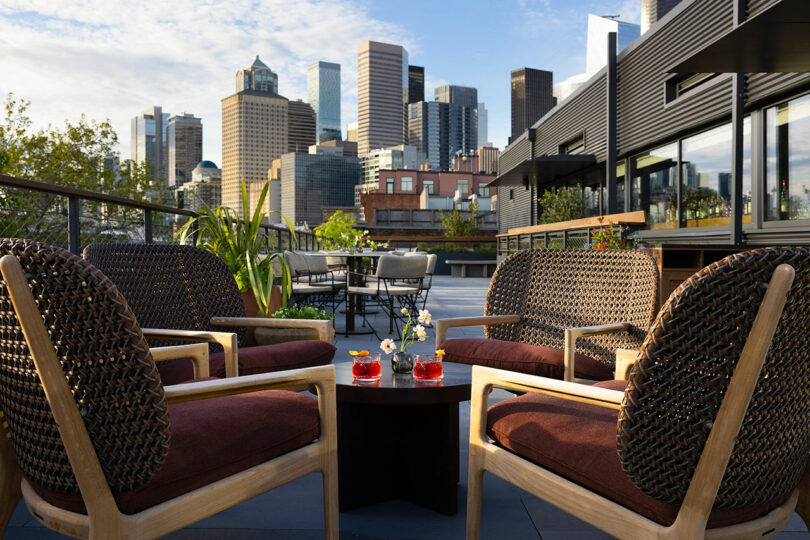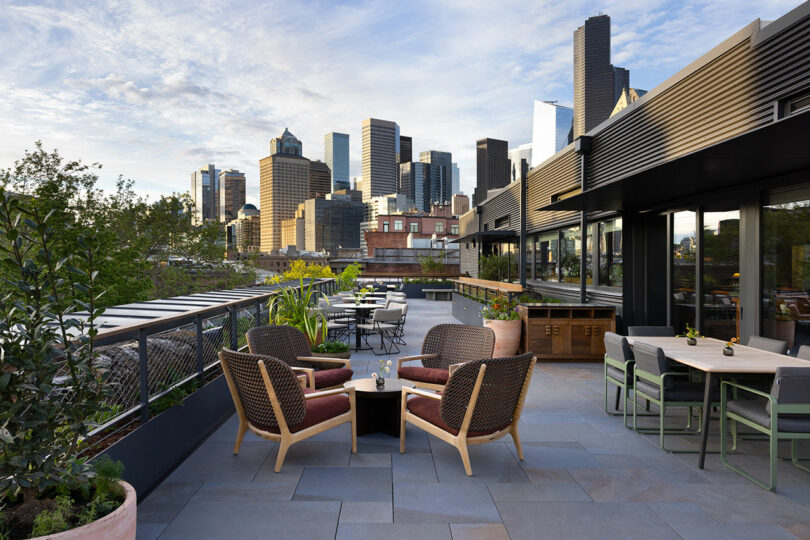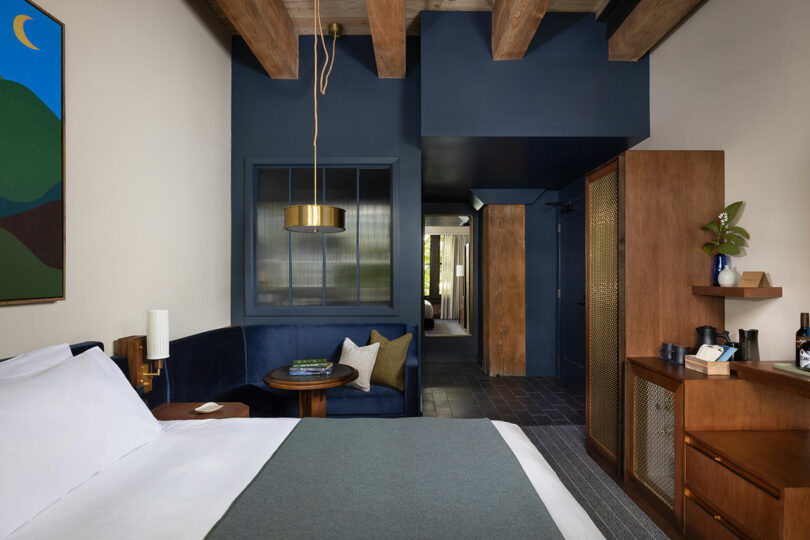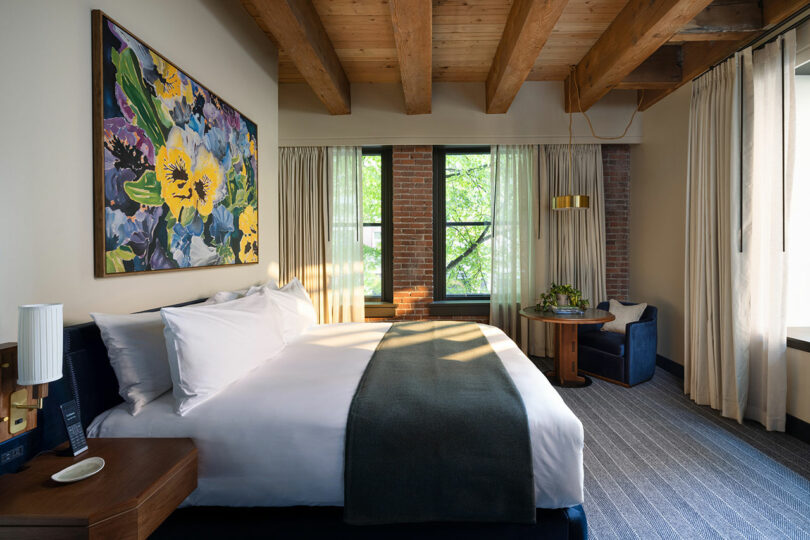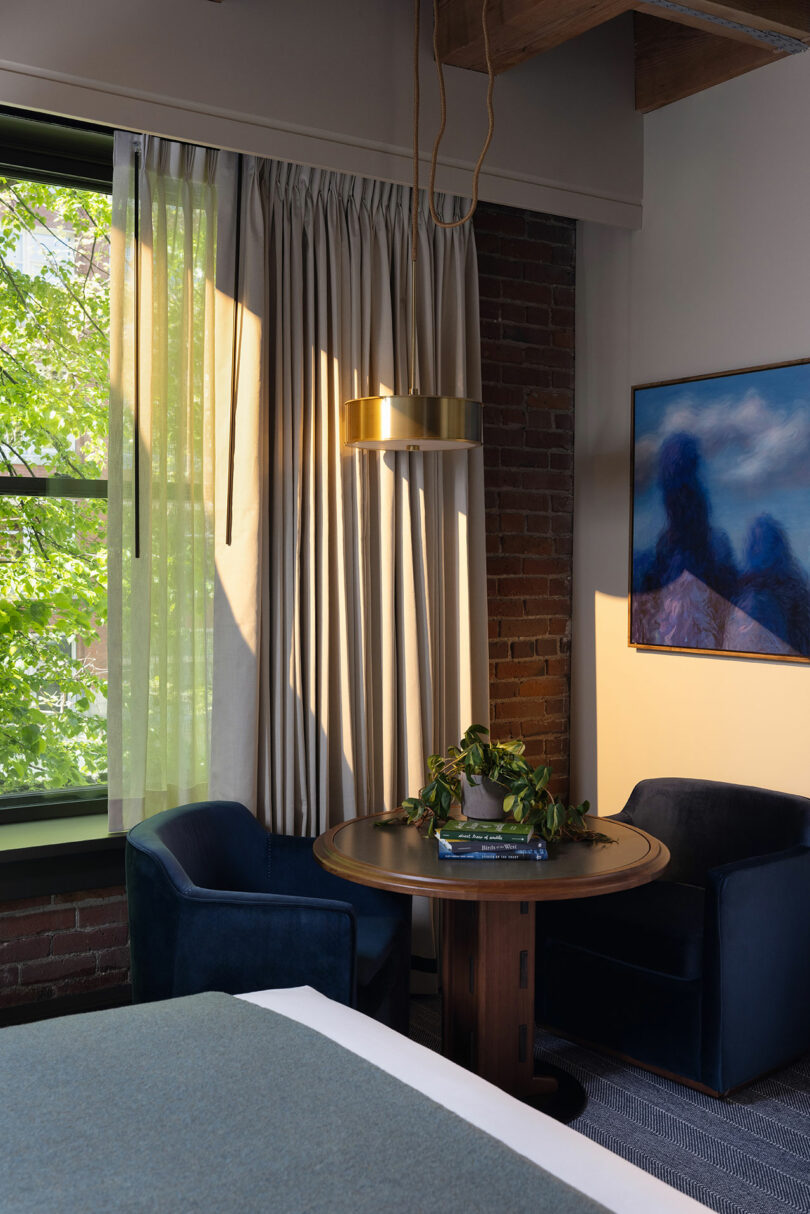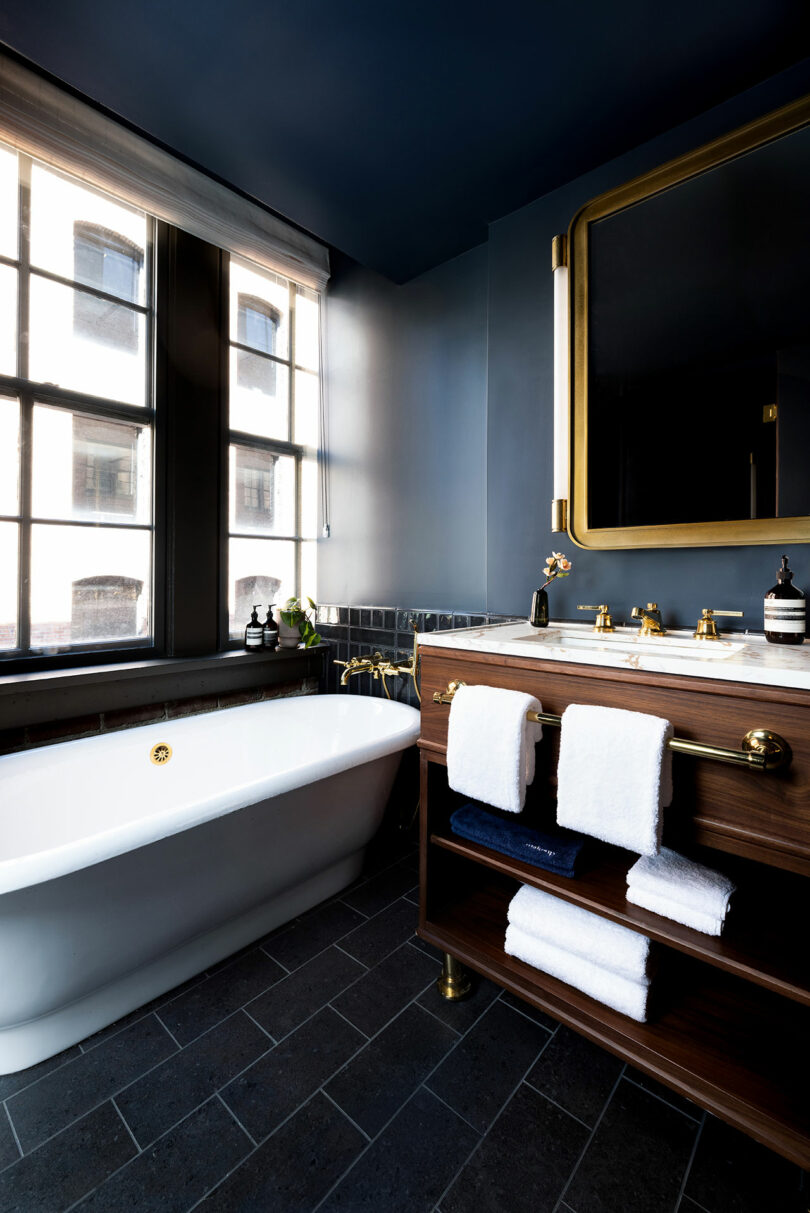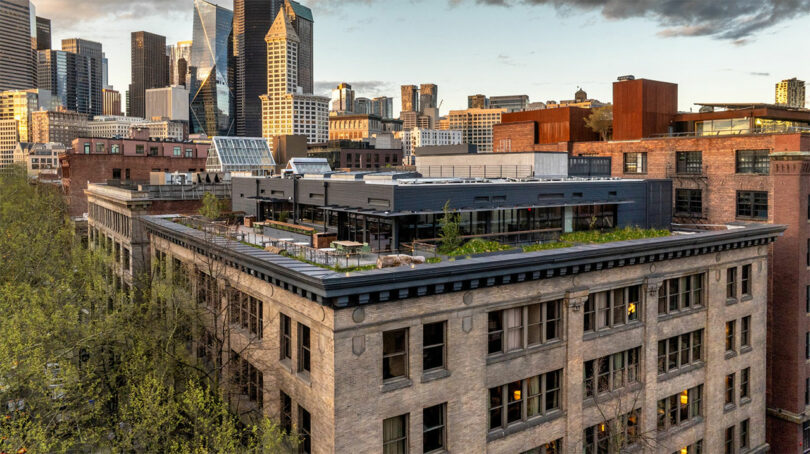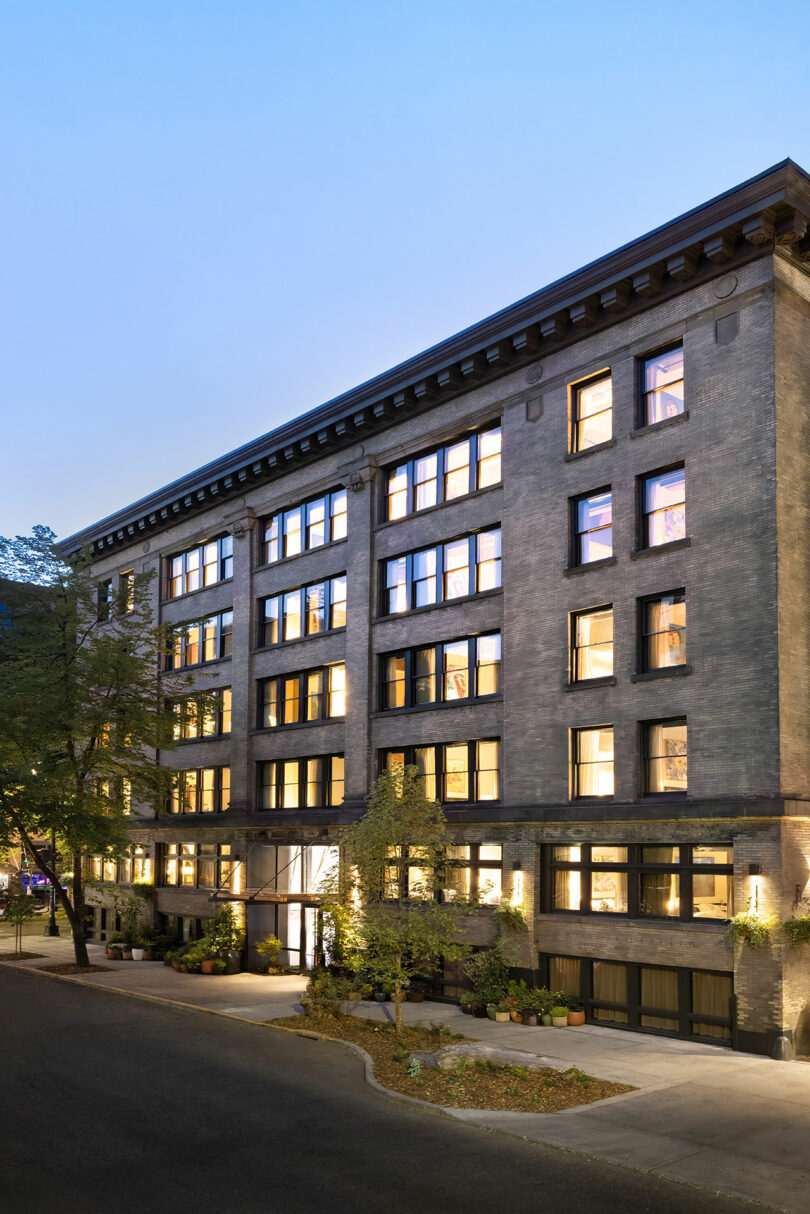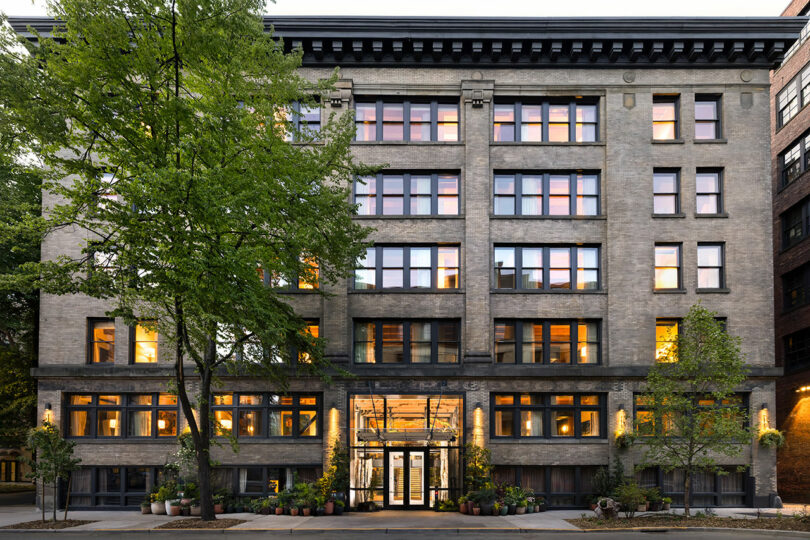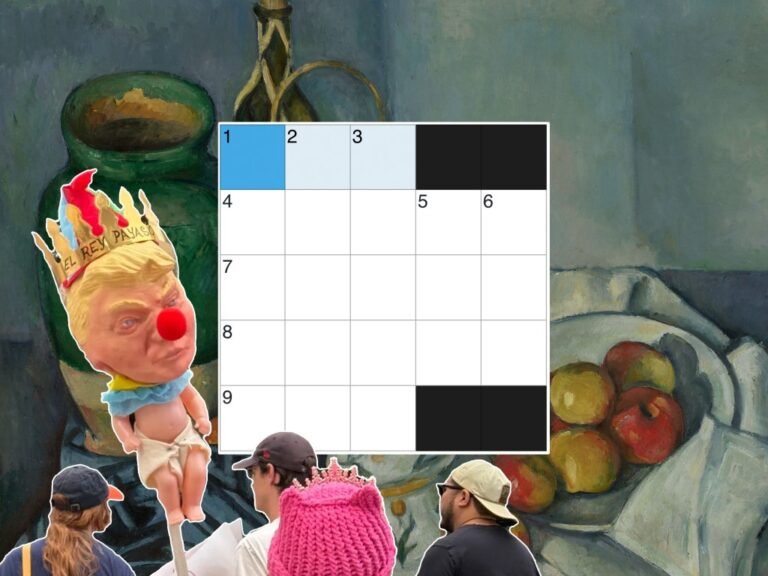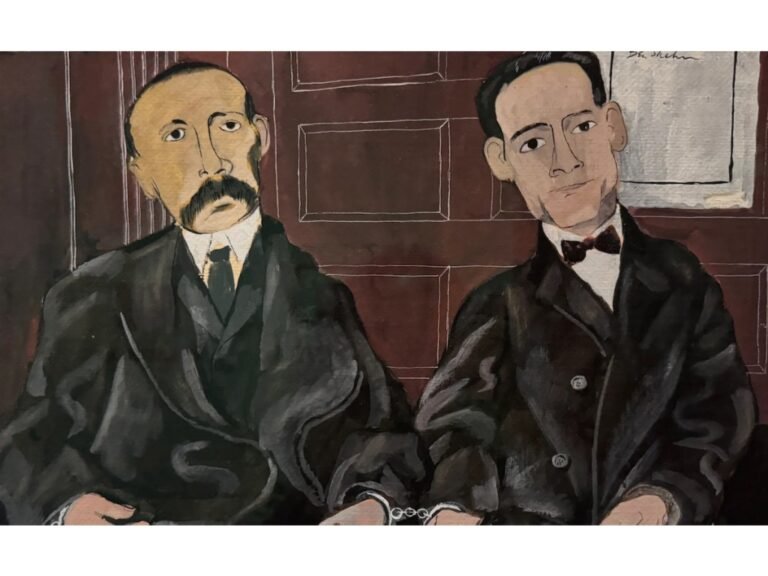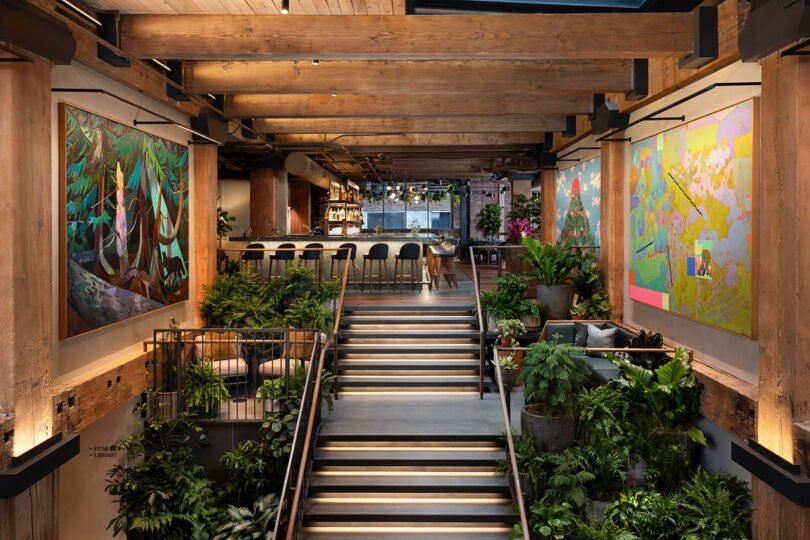
Pioneer Square, one of Seattle’s oldest districts, was home to a thriving logging industry in the mid-19th Century. It only seems fitting that Urban Villages – the development company behind the quickly expanding Populus hotel chain – should not only choose to revive one of the neighborhood’s historic brick buildings in its latest property, Populus Seattle, but also transform it into an urban rainforest.
Nods to the abundant woodlands that surround the city fully withstanding, the freshly imagined 120-key luxury hotel brings nature back into the equation. Building on the biophilic principles expressed in noted architect Jeanne Gang’s design of the first Populus Denver address, this urban oasis incorporates greenery and reclaimed wood at every turn.
On arrival, guests are greeted by artist Isvald Klingels’ “Ghost Forest“ installation. Achieved by local landscape architecture practice Site Workshop, the site-specific “living landscape” incorporates fallen tree stumps, snags, logs, and branches along with two, old-growth Red Cedars and a rare 16-foot-tall spiraling Yew tree. The piece hints at the area’s timber industry past but also the notion of cyclical renewal.
Living moss also extends up the multi-story sky court. While patches of indoor plants flank either side of the main staircase, additional greenery envelops an all glass solarium with the hotel’s main restaurant, Salt Harvest.
The lobby unfolds as a grand open-concept space with the Library and Art Room “community hubs” lounges adorned with an eclectic array of collected antiques. The grand staircase – crafted out of granite – leads up to the main restaurant replete in clay plaster wall, another nod to Seattle’s industrial past. Dining tables are staged with ocean-hued pottery by Portland artist Kati von Lehman and handmade flowers by Quyhn Nguyen contained in Gary Bodker glass vessels – yes, another medium with deep roots in this region.
“Through the design of Populus Seattle, we wanted to honor both the building’s history and its local context, embracing the lively contrasts between a stunning natural landscape and a rich urban environment,” says Carlos Herrera, Studio Design Leader at Curioso, the Chicago-based practice responsible for the hotel’s interior outfit.
“We were inspired by its unique location at the intersection of Seattle’s railways and waterways, blending past and present into a forward-leaning design still deeply rooted in the community,” says Herrera. “The outcome feels simultaneously restorative and invigorating, like a deep breath of fresh, Pacific Northwest air.”
Also “carbon positive” in its construction and operations, Populus Seattle differs from the Denver property in that it resulted from an adaptive reuse transformation rather than being built from scratch. Local firm The Miller Hull Partnership applied a sense of sensitive yet impactful intervention.
The firm retained the original six-story gray brick facade of the 1907-built Westland Warehouse – a former steam supply facility – but completely reconfigured its core. The structure’s original heavy-timber frame was restored and reinforced to meet today’s seismic codes.
A 1979-introduced sky court at its center was expanded to filter much needed natural light into internal guest rooms, as well as the public spaces below. As to ensure the metamorphosis of the building was as least carbon intensive as possible, certain disused architectural elements – Douglas Fir beams, exposed brick, and wood car deck – were repurposed.
These vestiges serve as important reminders of the past but don’t detract from an overall strategy of balancing urban grit with natural calm. To complement these elements, Curioso introduced a unifying material palette of newly forged steel and locally sourced raw wood.
With sweeping views of the skyline, Olympic Mountains, and lush forests in the distance, the Firn rooftop bar is rendered in moody ruby hues. Handmade tribal rugs carry across to the adjoining Summit Suite private dining room.
The guestrooms, themselves, unveil as serene retreats. Deep greens, rich blues, custom wood features, and leather upholstery drive home the natural and industrial heritage theme defining Populus Seattle altogether.
What: Populus Seattle
Where: Seattle, Washington
How much: $307
Design draws: A historic warehouse turned into a biophilic retreat evoking the verdant nature in the city’s surroundings.
Book it: Populus Seattle
Go virtually on vacation with more design destinations right here.
Photography by Ric Stovall.
